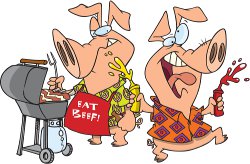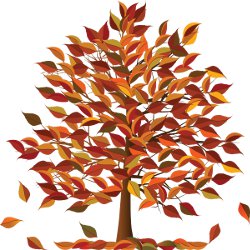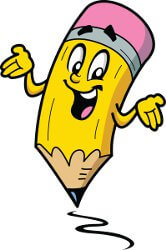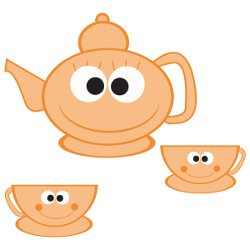Funny Personification Funny Personification About a Garden
Personification
Personification is a type of figurative language in the English language.
Click Here for Step-by-Step Rules, Stories and Exercises to Practice All English Tenses

Personification is when we give a human characteristic to something that is not human, such as an object or an animal.

Writers personify things to give good descriptions and help readers form pictures in their minds.
As with other types of figurative language, sentences with personification cannot be understood literally. That means that you cannot believe it word for word. Instead, you have to understand its figurative meaning.
(To better understand the difference between figurative and literal meanings, read Figurative or Literal.)
Let us look at an example of personification:
The leaves danced to the ground.
In this sentence, the leaves are being personified. That means they are given the human characteristic of dancing.
Humans can dance,
but leaves cannot.
We are giving the leaves the human characteristic of dancing to show the reader how they gracefully fell to the ground. The leaves fell off the tree and floated to the ground.

Here is another example of personification:
The flowers were begging for water.
We know that flowers do not have mouths and they cannot really ask us for water. We are giving the flowers the human characteristic of begging to show that they are in need of water. They are starting to dry up and they really need someone to water them.

Personification examples
Here are some more common examples of personification.
- My stomach was growling.
(I felt hungry.) - Tom's pencil was flying across the page.
(Tom was writing fast.)
- The ocean waves ran across the beach.
(The waves were covering the sand.) - The old door moaned in protest as it opened.
(The old door creaked because it had not been opened for a long time.) - The moon guarded the city at night.
(The moon was shining over the city.) - His hair was dancing in the wind.
(His hair was moving in the wind.) - The angry rain pounded on my windows.
(The rain was falling hard against the windows.) - The red light yelled, "Stop!"
(A red traffic light is a signal to stop your car.)
- The apples jumped off the tree.
(The apples were falling to the ground.) - The wind caressed her cheeks.
(The wind moved across her face.) - The trees were waving in the wind.
(The wind was blowing and moving the tree limbs.) - Nick's puppy barked a sad goodbye.
(Nick's puppy was barking at him as he left.) - The painting spoke to me about my childhood.
(The painting made me think about when I was a child.) - The tornado attacked the city and wrecked the farms.
(The tornado caused a lot of damage.)
- My jacket hugged me in the cold snow.
(I was wearing the jacket and it kept me warm.)
Personification in poetry
Personification is very common in poetry. Writers use personification because it helps readers form visual pictures in their minds. Personification can also add humor in poetry.
Here are two poems that contain examples of personification. In each poem, the objects and personification are colored green.
Here are some definitions to help you understand the first poem better
- weary = tired
- dew = drops of water
- arranged = set; get into position
- topaz = blue-green color
- tortoises = turtles
by William Blake
"Ah, William, we're weary of weather,"
said the sunflowers, shining with dew.
"Our traveling habits have tired us.
Can you give us a room with a view?"
They arranged themselves at the window
and counted the steps of the sun,
and they both took root in the carpet
where the topaz tortoises run.
In this poem, the sunflowers are being personified. To understand this poem, you have to know that sunflowers are a type of flower that always turn toward the sun. These two sunflowers are telling William that they are tired of the changes in the weather outside. They want to be put inside in a window where the sun shines in on them all day.
They counted the steps of the sun means that they moved with the sunlight as it came through the window.
They took root in the carpet means they stayed in that room for a long time.


The second personification poem gives human characteristics to your food at dinnertime. Personification is used in this poem to add humor.
- chorus = music
- cackled = laughed
- chattered = talked
- gurgled = talked; made noises
- clan = family
by Sharon Hendricks
The teapot sang as the water boiled
The ice cubes cackled in their glass
the teacups chattered to one another.
While the chairs were passing gas
The gravy gurgled merrily
As the oil danced in a pan.
Oh my dinnertime chorus
What a lovely, lovely clan!
This poem describes the sounds you hear while dinner is being prepared. Each object makes its own sound creating a "dinnertime chorus."

This was an overview of personification. Now that you understand, it is time to practice! Get our ESL Books.
raiwalasputhessir.blogspot.com
Source: https://www.really-learn-english.com/personification.html